Have you ever wondered why coffee at home never tastes quite the same as the stuff the professionals make in your favorite coffee shop?
There are lots of factors that affect the final cup you produce but one thing many people ignore is the temperature of the water.
What is too hot? What is too cold? What temperature is perfect for brewing? And what about serving? In this article, we’ll be discussing these questions and more – helping you understand how to brew outstanding coffee just like a trained barista.
If you’re impatient for quick answer about coffee temperature, check out this video that explains it in a nutshell – but after that, please read on since we’ll be going into quite a bit more detail.
Table of Contents
The basics of brewing
Brewing the perfect cup of coffee is a complicated process with many variables, all of which can have a significant effect on the result. There is no one aspect of preparing coffee that is more important than the others, and if you neglect one, you’ll end up with an inferior brew.
Before focusing on water temperature, let’s take a quick look at the overall brewing process.
Of the variables involved when making coffee, water temperature is just one. Others include brewing method, bean quality and type, grind size, brewing time, water quality – and even how you store your beans.
The key process when brewing coffee is extraction. Coffee beans contain a whole host of flavor compounds, including the delicious aromas and flavors that we want in our coffee as well as a lot of undesirable bitter flavors that we don’t.
The art of brewing fantastic coffee is the process of releasing all the good stuff while leaving the bad bits still locked away.
When ground coffee comes into contact with water, the extraction begins; first, the desirable flavors are released, followed by the undesirables.
Grind size and the amount of time the coffee is in contact with the water both affect the extraction, with finer grinds and longer contact allowing more extraction to take place. Under-extracted coffee is flavorless, over-extracted coffee tastes bitter and burnt.
And then there is the temperature of the water. So let’s look at that now.
The ideal brewing temperature
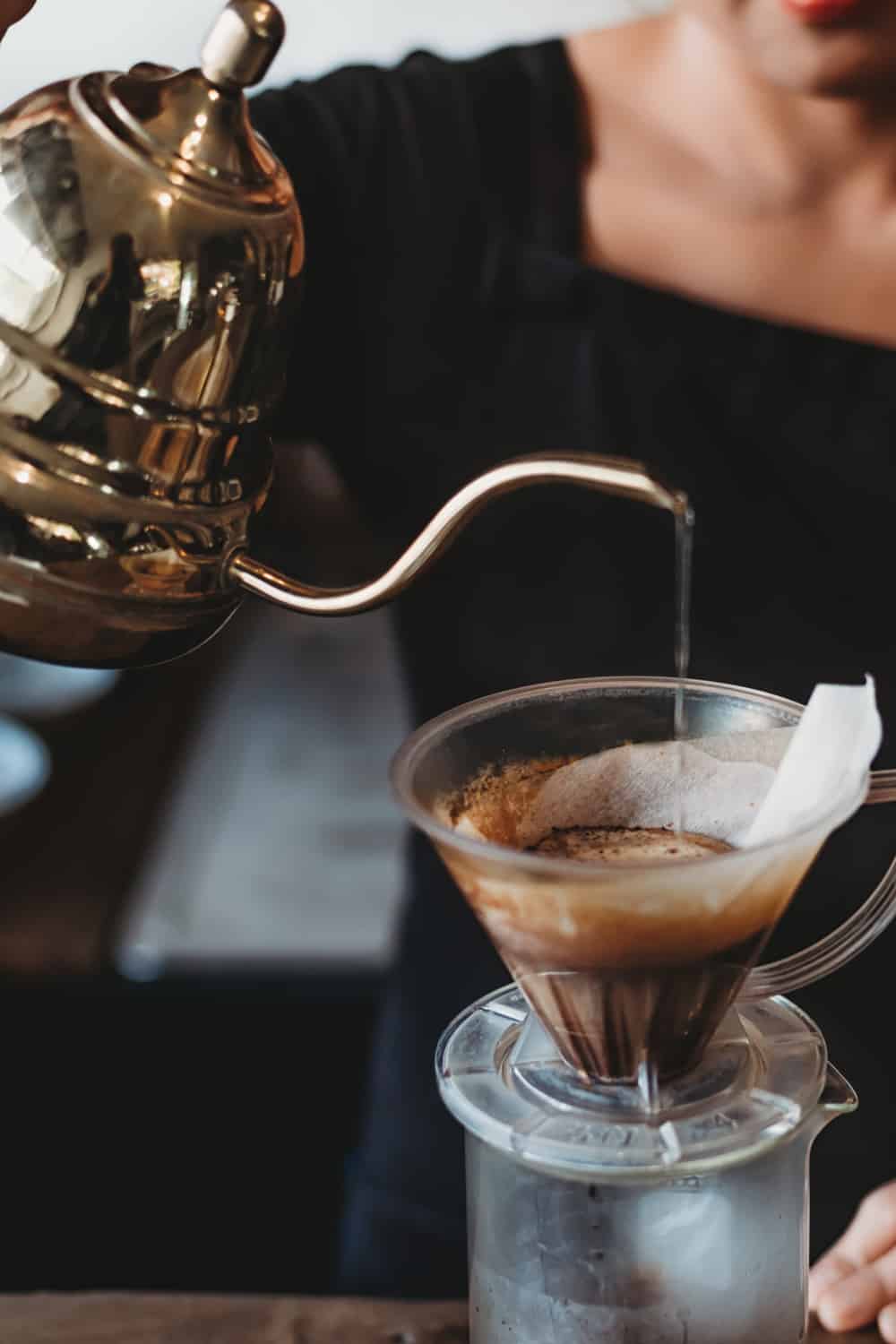
As we noted, making coffee is all about extraction. There are two considerations here. Firstly, if the water is too hot, it will “scald” the coffee, spoiling the desirable flavors, over-extracting and making it unpleasant to drink.
On the other hand, if the water is not hot enough, the soluble compounds in the coffee will not dissolve and the coffee will be under-extracted; your beverage will end up being insipid and flat.
This means for perfect coffee, you need to find the “Goldilocks” temperature in between, the temperature that is neither too hot nor too cold.
The good news here is that there is broad agreement in professional circles over the temperatures you should be aiming for. According to the NCAUSA and other authorities, the ideal temperature is 185-205°F (91-96°C). Simple (1).
Is it worth it and how do you make sure your water is at the right temperature?
Although there is little debate about the ideal temperature for brewing, the issue of how much attention you should pay to it is more contentious.
Some would argue that fussing over differences of a couple of degrees is a waste of energy and that you would be better spending your time actually enjoying your morning brew (2).
Others, however, would argue strongly that coffee brewing is a precise process and that you should absolutely pay close attention to the temperature. Think about it, what’s the point of buying specialist beans and expensive equipment if you don’t make an effort to control the temperature (3)?
So how do you do it?
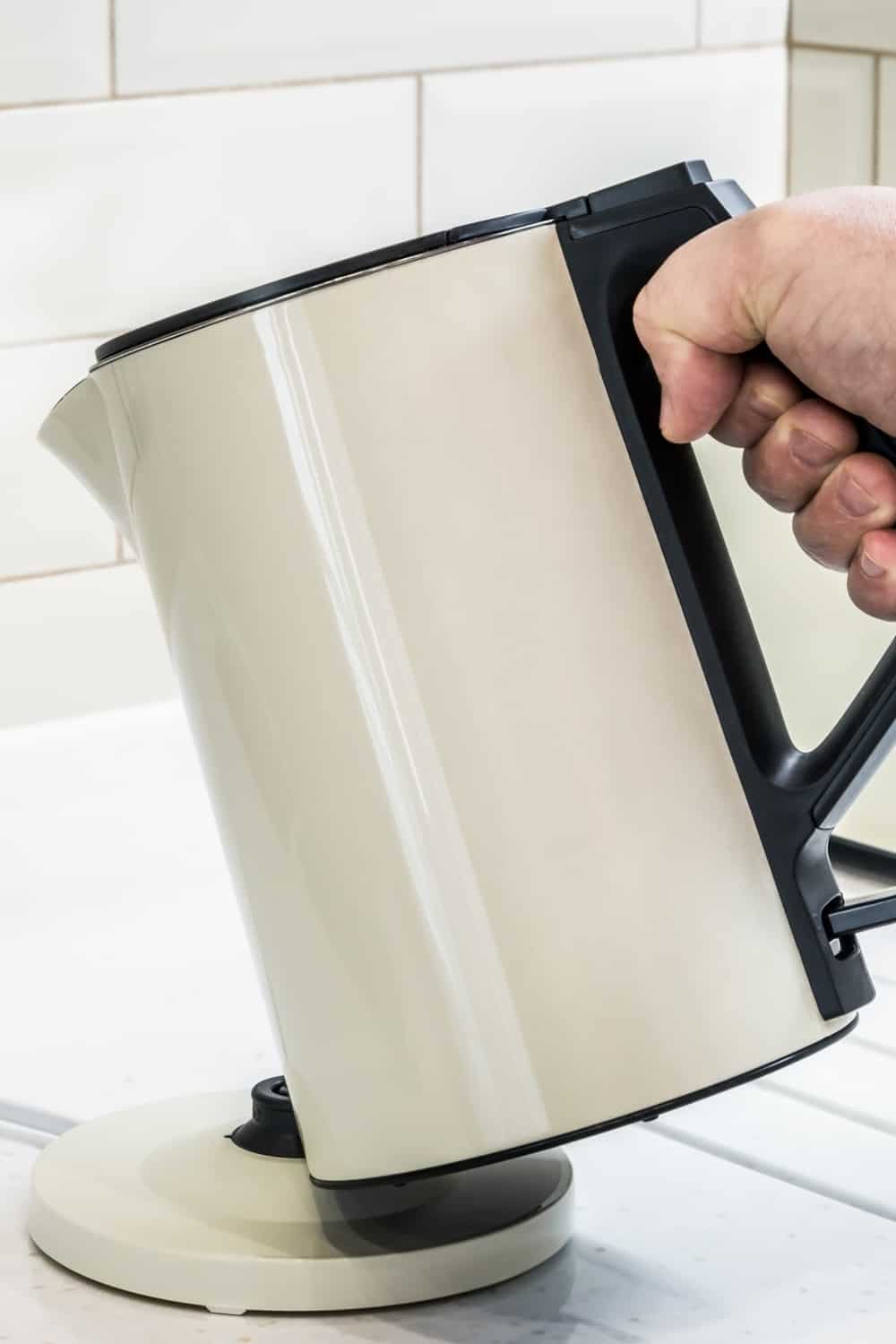
Assuming you want the best cup of coffee possible and you’re willing to go the extra mile to brew it, how can you ensure the water you are using it at the right temperature? Let’s think about the different methods, from the fanciest right down to the very simplest.
At the top end of the scale, you can buy a specialist kettle. Kettles exist that allow you to choose the precise temperature you require and then maintain the water at exactly that temperature. This kind of device gives you complete and accurate control over the temperature of your water.
For many people, this level of precision might seem a little obsessive – it’s a cup of coffee, not a science experiment! If you fall into this category, a less extreme option is a thermometer.
Again, here you have options. If you want to use an infrared thermometer, that’s fine – but a simple, old-fashioned one will do the job just as well.
Finally, without spending any extra money, you can just use the traditional method. After the water boils, simply leave it to rest for about a minute. This will give it enough time to cool a couple of degrees, leaving it within acceptable coffee-brewing limits.
It’s up to you how precise you need to be, but as long as the water is not boiling, you should be able to achieve acceptable results.
How about serving?
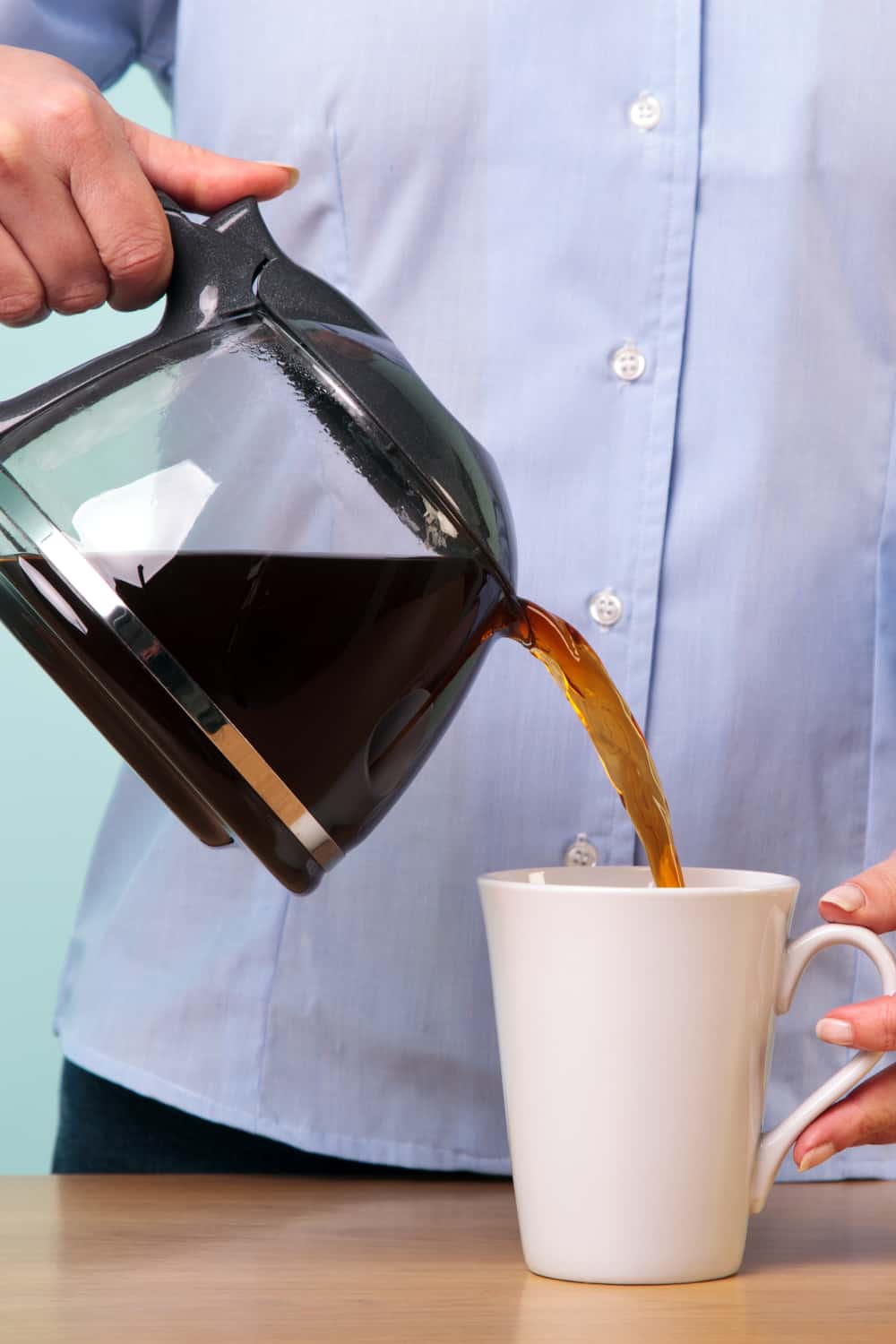
While the optimal temperature for brewing coffee is a fairly straightforward question, the correct temperatures for serving (and drinking!) coffee is another matter.
As anyone who enjoys beer or wine will know, these drinks are best enjoyed at certain temperatures. If you drink a decent red wine that has been chilled, the complex flavors will disappear; similarly, if you drink a beer at room temperature, it will taste bitter rather than crisp and refreshing.
The same is true for all foods and drinks, including coffee, so let’s have a look at some of the science behind this phenomenon.
Research has shown that changes in temperature alter our perception of taste. For example, it has been demonstrated that as the temperature of cheese is increased, the cheese seems to become more bitter (4).
You may also have noticed how ice cream seems much sweeter if you let it melt before consumption. It turns out that increasing the temperature of food heightens the sensation of sweetness and bitterness. At the same time, sourness and saltiness remain the same.
If you continue to increase the temperature to around 95°F (35°C), you reach a point where you stop tasting anything; beyond this, you are in danger of burning your mouth.
We don’t need to go into too much more detail here. What we need to take away from this is that food and drink have different flavors depending on the temperature – so your cup of coffee will taste different depending on the temperature at which you sip it.
Optimal serving temperature
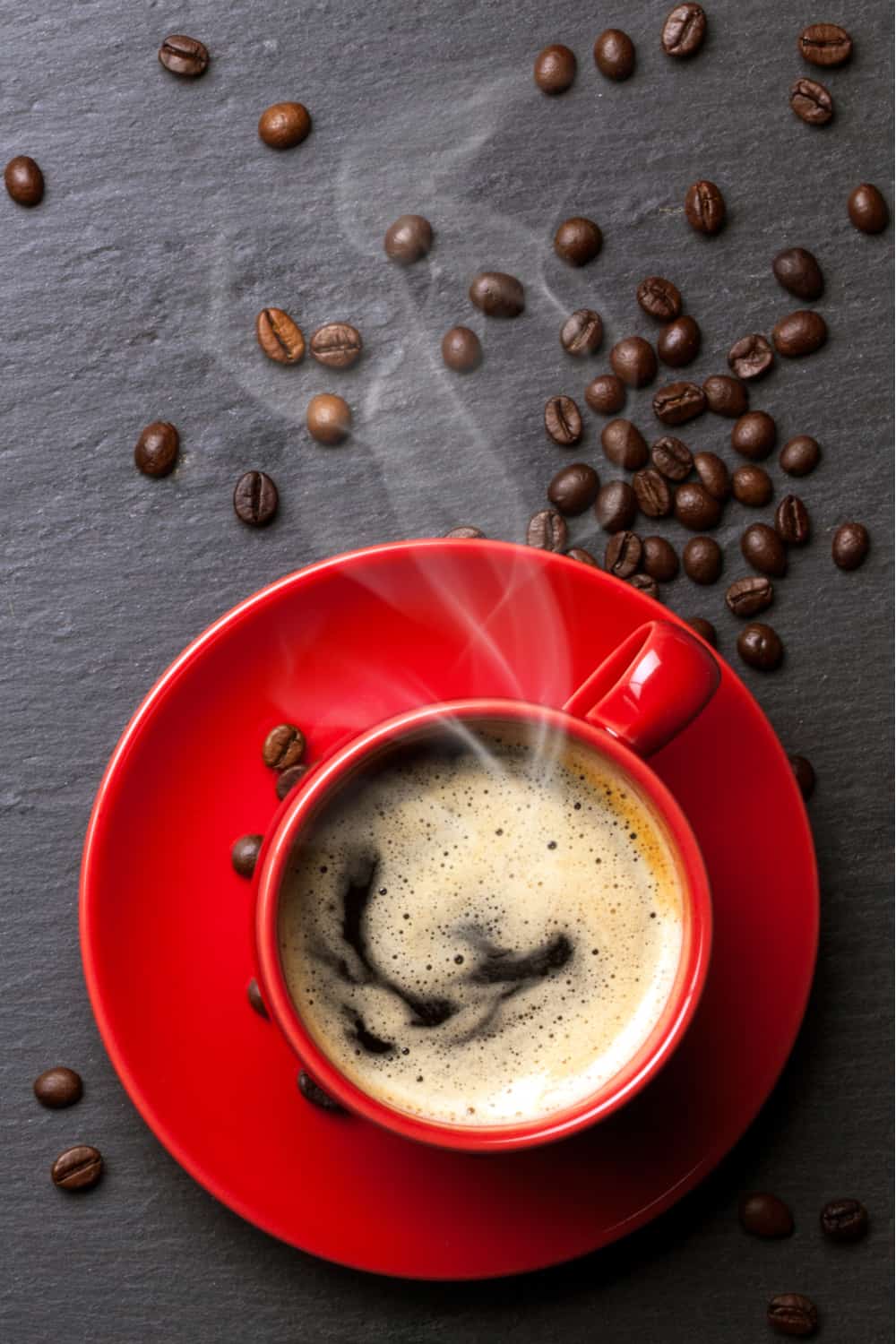
So, what is the best temperature for coffee? Since the way we like to drink our coffee is personal and subjective, it is impossible to give a definitive answer, but there are a couple of factors that have some bearing on the debate.
The usually recommended temperature for serving coffee within the hospitality industry is around 185-190°F (85-88°C). A hot brew on a cold day is comforting and cozy in a way that lukewarm coffee never can be, and customers expect this (5).
For many of us, if a coffee shop serves us “cold” coffee (and by this we mean not piping hot), we will probably be upset and may even ask for a fresh one.
However, at the higher end of the temperature scale – aside from the risk of injuring yourself – you will have a harder time distinguishing the subtle flavors of a good coffee.
We have to balance two factors here. Of course, we want great tasting coffee, but coffee is about more than just notes of berries and hints of chocolate. It’s also about the morale-boosting effects of a hot, steaming cup of your favorite beverage. Sometimes there is a trade-off.
Some would argue that when it comes to premium coffee, the temperature needs to be far lower to allow you to truly appreciate the drink. Some professionals prefer to taste coffee at as low as 130°F (54.5°C), claiming that only at this temperature can one distinguish the complex flavors of the beans.
Perhaps one way to look at it is this: if you are in need of a pick-me-up on a cold and wet afternoon and the coffee you are drinking is nothing extraordinary, you can make it a little hotter.
However, if you are in possession of some rare and expensive specialist beans, perhaps serve the coffee a little cooler to allow the flavors to shine through. Otherwise, what’s the point of paying for exceptional coffee if it’s so hot it tastes like the instant?
So…how hot?
Ok, so you want a bottom line. How hot should coffee be when you drink it?
The NCAUSA recommends serving it right after brewing, at a temperature of around 180-185°F (82-85°C). Others might go a little lower, in the range of 155-175°F (68-79.5°C).
Our advice is this: as long as you don’t burn the coffee when you brew it, it’s ok to serve it a little hotter because it will cool down and the person drinking it can decide when it’s ready. Heating it up again when it’s cold is more problematic…
How to keep coffee hot
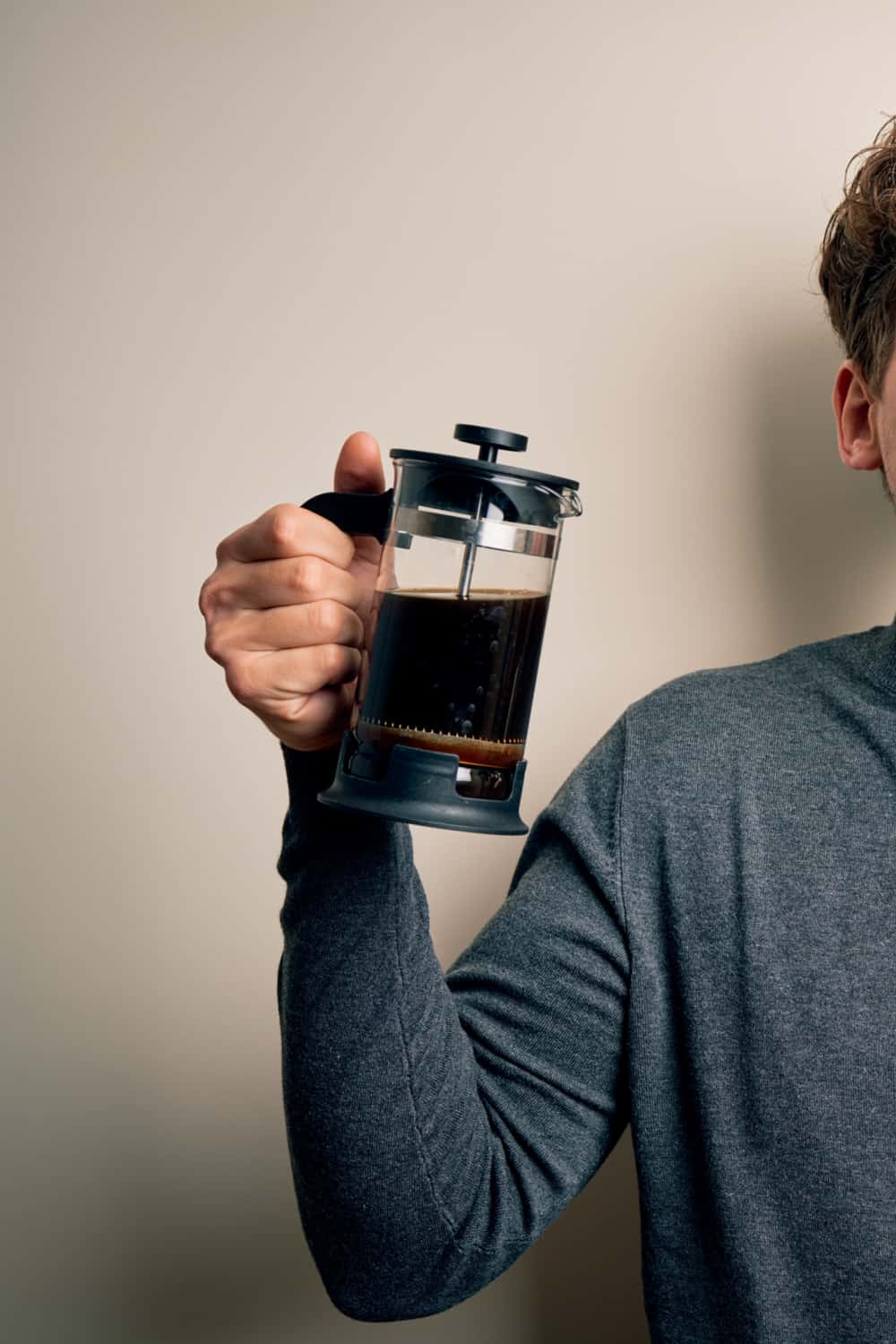
So far, we’ve established that coffee needs to be brewed at temperatures of around 195-205°F and the best temperature for consumption is anything between 130 and 185°F, depending on personal preference and the quality of the beans.
But what happens if your coffee drops below these temperatures? Is there anything you can do to save it? What are the best ways to keep it hot or warm it back up once it’s gone cold?
Unfortunately, good coffee is never the same reheated. You have a few options, including a quick blast in the microwave or placing it on the hotplate, but none of these will return the coffee to its former glory.
Microwaved coffee always tastes inferior, as though the microwave somehow kills and flattens the flavors; heating it back up on the hotplate also leaves your coffee tasting burnt and unappetizing.
Your best option is to make sure you drink it before it drops below the optimal temperatures.
If you drink French press coffee, leaving it in the carafe is not a good choice. The water is still in contact with the coffee and it will continue to extract, making your beverage bitter.
With an electric drip coffeemaker, once the coffee has finished brewing, you can leave it for a certain amount of time in the jug and the hotplate will keep it warm – that’s what it’s designed for – but don’t leave it too long or it will start to taste “stewed”.
The best option to keep coffee warm is to buy an insulated mug with a lid. This way, the coffee will keep warm naturally inside and will not lose its wonderful flavor, leaving you more time to enjoy it at your leisure.
If you don’t have an insulated mug, try warming the cup with hot water before pouring the coffee. This can help extend the life of your drink.
Science and art
The best temperatures for brewing coffee are fixed and there is little debate over the matter; the temperatures at which you drink your coffee are more down to personal preference and the quality of coffee you drink.
Making great coffee is both a science and an art. You can know all the correct measurements for coffee temperature and own all the best equipment, but it still takes practice, experimentation and experience to produce the perfect cup.
How hot do you like your coffee? Do you enjoy a drink that takes the skin off your mouth or do you prefer the subtle flavors of coffee served at lower temperatures? Whatever your views, please let us know as we always love to hear from you – and if you enjoyed our article, please don’t forget to share!